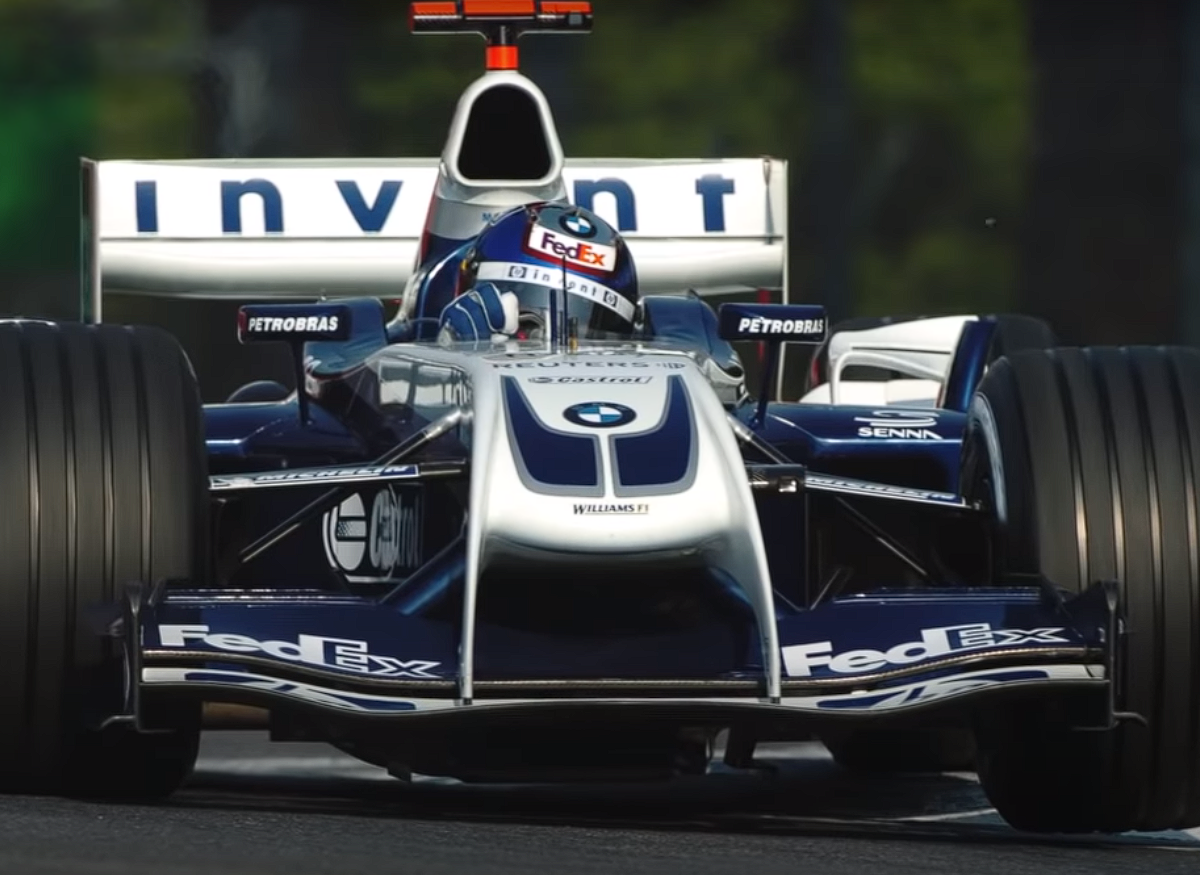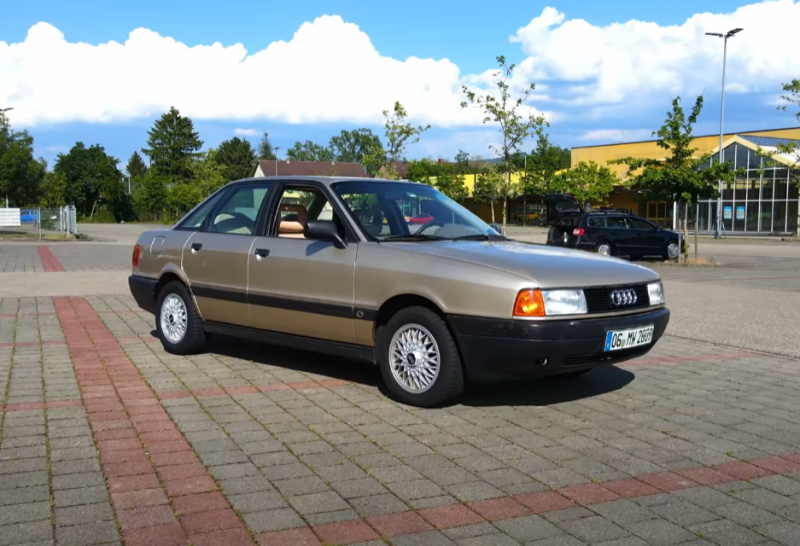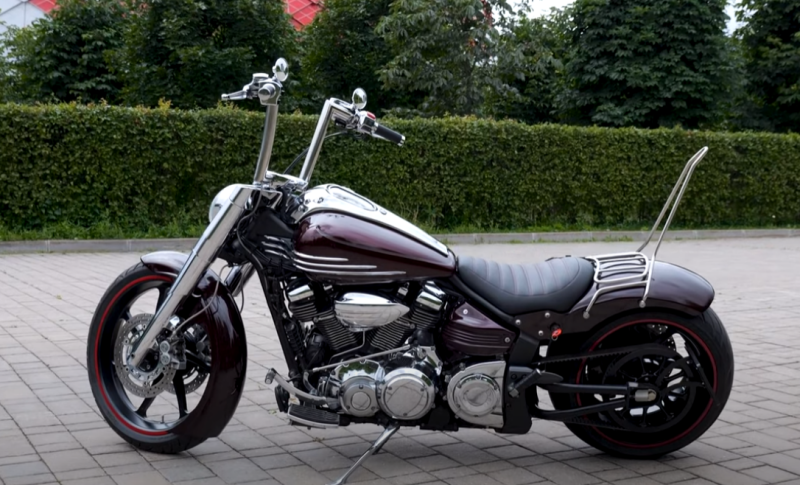After winning Le Mans in 1999, all the "extra" racing projects were closed: BMW focused on Formula 1. The Williams team, which in the mid-nineties was considered almost invincible, was chosen as a partner. But the new Bavarian engine is longer and heavier than the French Supertec used by the team last year. Because of this, the wheelbase of the car had to be increased by 7 cm, and the side pontoons made more massive in order to provide the engine with sufficient cooling. The latter led to an increase in aerodynamic drag, and reduced speed on straight lines.
The V10 72 ° engine, which received the E41 index, developed 750 hp in the first version. With. But already at the end of the season, in the E41 / 4 version, its power was brought up to 810 hp. With. at 17200 rpm. That is, only 5 horses less than the champion Mercedes-Benz FO 110J. It is obvious that when returning, BMW decided to play it safe and relied on reliability, not power.
At the same time, the very first "Big Prize" brought the Williams BMW team a podium - in Australia, Ralf Schumacher finished in third place! And yet, in terms of performance, the FW22 could not compete with the best cars of that season, the Ferrari F1-2000 and McLaren MP4/15 Mercedes. At the end of the season, Ferrari scored 170 points, McLaren - 152, while Williams only 36. Ralf Schumacher's three podiums were the highest achievement for the team.
In 2001, BMW decided to use a different concept. The camber angle of the cylinder block was increased from 72 ° to 90 °, at that time this configuration was used only in Ferrari, but the rest of the manufacturers adhered to the traditional 72 ° for “tens”. Unless Honda chose a slightly larger angle - 80º. Such a large camber is unusual for a V10, but this was a purely layout decision - lowering the height of the motor made it possible to lower the center of gravity of the car, make the engine casing lower and reduce aerodynamic drag. In addition, it was possible to direct more air to the rear wing.
The BMW P80 V10 90º engine developed 850 hp. With. at 17200 rpm, that is, now the Bavarian unit was more powerful than Mercedes-Benz (830 horses) and Ferrari (840 horses). At the 2001 San Marino Grand Prix, this engine brought BMW its first World Championship win since 1986! In total, Williams pilots managed to win four Grand Prix of that season.
In 2002, the Ferrari F2002 and Michael Schumacher reigned supreme in the World Championship. But BMW was still the most powerful engine in the championship. And in qualifying for the Italian Grand Prix, this V10 broke the 19000 rpm milestone! The current champions - Ferrari, reached this level only in the next season.
In terms of sheer speed on one lap, the Williams BMW were in full order: seven pole positions in a season that included a streak of five poles in a row. And the speed of Montoya in Monza made it possible to break Keke Rosberg's record, which had been held since 1985! And yet, despite the most powerful engine, the Williams pilots managed to win just one victory in the season.
In 2003, the BMW engine developed over 900 horsepower. With! Such power has not been remembered in Formula 1 since 1987. A powerful engine and a good chassis allowed Juan Pablo Montoya to fight for the title with the “Red Baron” himself – Michael Schumacher.
At one point we were 8 points ahead of Ferrari in the Constructors' Championship, but ended the season 14 points behind them. In fact, we ourselves lost the championship. Ferrari did a great job to get the fight back and we didn't do well at the end of the year.
— Patrick Head.
Perhaps Mr. Head over-praises his rivals a little. After all, if it weren’t for the undercover “tire wars: Michelin vs Bridgestone”, then who knows how it would have ended ... At that time, dissatisfaction with their partners from Williams was already ripening in the leadership of the Bavarian concern, due to excessive conservativeness in the approach to developing the chassis and aerodynamics.
In Didcot, they decided to go for broke, and presented the revolutionary Williams FW26, nicknamed the “walrus” due to the shape of the front wing brackets. Before the start of the season, it was believed that the most powerful BMW engine and advanced aerodynamics would leave no chance for rivals to win! In addition, after the first tests, the racers of Frank Williams radiated genuine optimism:
I have very good impressions of Williams FW26. I think this car has a lot of potential - from the very beginning I could attack with full force. I don't want to sound too optimistic, but I'm very happy with the car.
— Juan Pablo Montoya.
But the mountain gave birth to a mouse. The revolutionary car suffered from excess weight in the front. Before the Hungarian Grand Prix, Williams decided to redesign the nose cone, giving it a traditional shape. After these changes, the car progressed noticeably, and Montoya was even able to win in Interlagos. At the end of the season, Williams BMW finished just fourth in the Constructors' Championship, with 88 points.
After that, the composition of the team completely changed. Both pilots left: Ralf Schumacher and Juan Pablo Montoya. Patrick Head also resigned:
I understand everything perfectly and I think that the change of technical director will benefit Williams. I just want to note that the decision to leave the post was personally mine. And I took it a month and a half ago. So BMW has absolutely nothing to do with it!
In 2005, the output of the Bavarian engine exceeded 950 horses, but this did not help - Mark Webber and Nick Heidfeld could not win a single victory! Power did not bring BMW the main thing - the Champion title. The leadership of the Bavarian concern believed that their partners from Williams were to blame, making less efficient chassis than their main competitors: Ferrari, McLaren and Renault. The Germans decided to terminate the contract with the Iron Frank, and buy out the Swiss Sauber team in order to make the chassis themselves.
We have no illusions that we have a long way ahead of us. 2006 is a year of transition and therefore it would be premature to announce any sporting goals. Sauber finished eighth in the Constructors' Championship in 2005 and that's our starting point.
— Director of BMW Motorsport, Prof. Mario Theissen.
This divorce had a negative impact on both sides. Without BMW engines, the results of Williams fell lower, and the Bavarians ... with Sauber, they managed to win only one victory - in Canada in 2008. And on July 29, 2009, the Germans announced that they were leaving Formula 1 at the end of the season.















